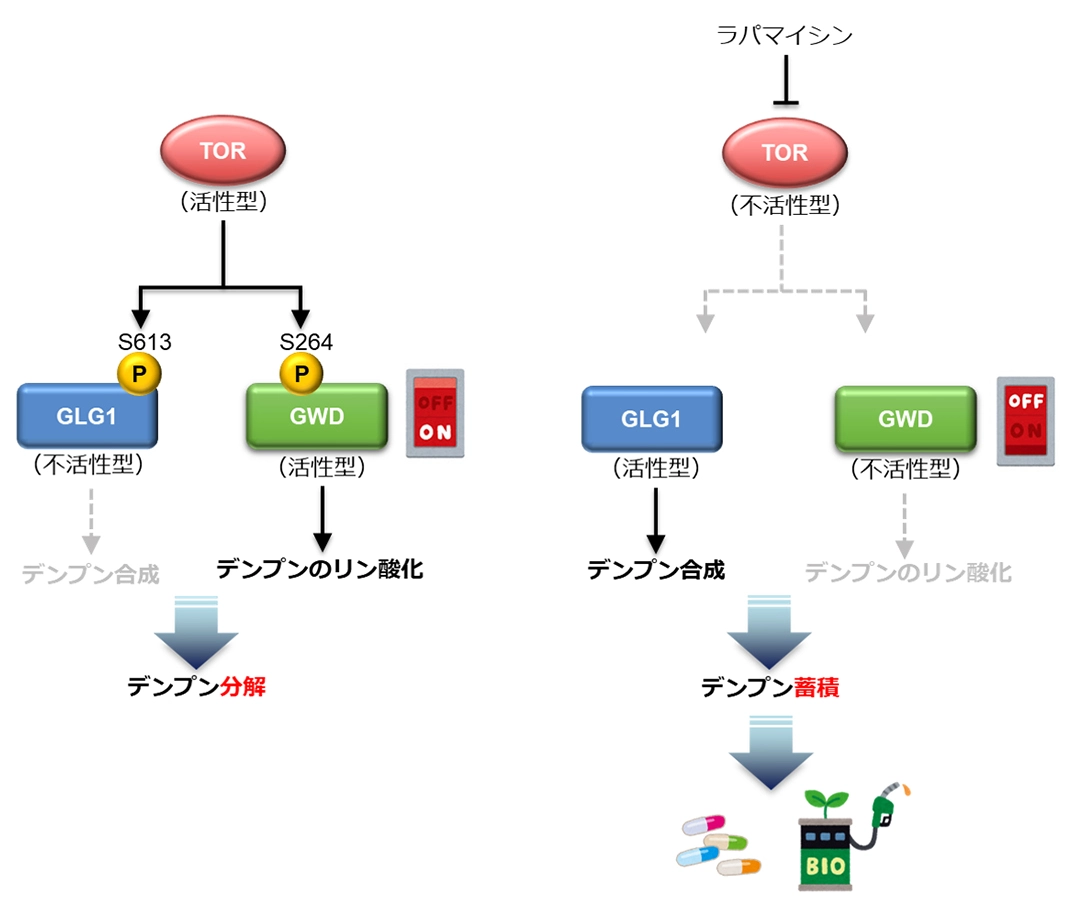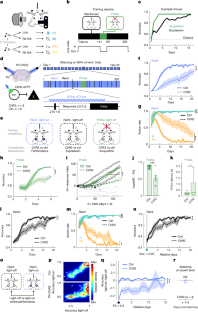2025-03-26 東京科学大学

図1.藻類におけるTORを介したデンプンの分解と合成の調節機構の模式図
<関連情報>
- https://www.isct.ac.jp/ja/news/gd2ev7huyarv
- https://www.isct.ac.jp/plugins/cms/component_download_file.php?type=2&pageId=&contentsId=1&contentsDataId=908&prevId=&key=6dc1b1c3875fcd27623c7dee6f1bbe5b.pdf
- https://academic.oup.com/plphys/advance-article/doi/10.1093/plphys/kiaf106/8088373
単細胞紅藻におけるα-グルカン、水ジキナーゼを介したデンプン分解を制御するラパマイシンシグナル伝達の標的 Target of rapamycin signaling regulates starch degradation via α-glucan, water dikinase in a unicellular red alga
Sota Komiya, Imran Pancha, Hiroki Shima, Kazuhiro Igarashi, Kan Tanaka, Sousuke Imamura
Plant Physiology Published:21 March 2025
DOI:https://doi.org/10.1093/plphys/kiaf106
Abstract
Target of rapamycin (TOR) signaling pathways are major regulators of starch accumulation in various eukaryotes. However, the underlying molecular mechanisms of this regulation remain elusive. Here, we report the role of TOR signaling in starch degradation in the unicellular red alga Cyanidioschyzon merolae. Reanalysis of our previously published phosphoproteome data showed that phosphorylation of the serine residue at position 264 of a protein similar to α-Glucan water dikinase (CmGWD), a key regulator of starch degradation, was not increased by rapamycin treatment. In the CmGWD knockout strain, starch content increased and starch phosphorylation decreased, indicating that CmGWD is a functional GWD. CmGWD-dependent starch degradation under dark conditions was alleviated by rapamycin treatment. The overexpression of a phosphomimic CmGWD variant, in which Ser264 was replaced by aspartic acid, or a dephosphomimic CmGWD variant, in which Ser264 was replaced by alanine, resulted in 0.6-fold lower and 1.6-fold higher starch accumulation compared to the wild-type CmGWD-overexpressing strain, respectively. The starch levels corresponded with starch phosphorylation status. Furthermore, the dephosphomimic CmGWD-overexpressing strain accumulated nearly the same amount of starch with or without rapamycin treatment as the rapamycin-treated wild-type CmGWD-overexpressing strain. In contrast, rapamycin treatment did not trigger an increase in starch accumulation in the phosphomimic CmGWD-overexpressing strain. These results indicate that TOR signaling regulates starch degradation in C. merolae by altering the phosphorylation state of Ser264 in CmGWD.


